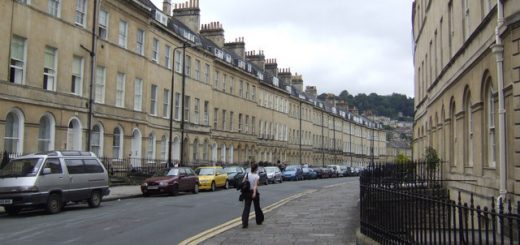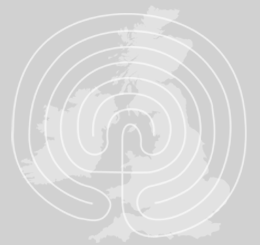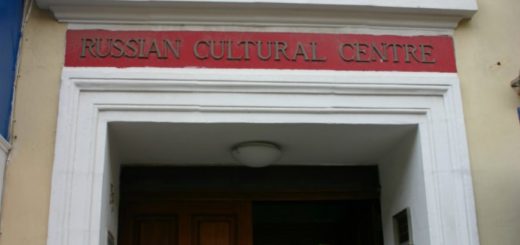Vampire of Venice – skull found
just watched this BBC video report on a skull discovered in Italy that had a brick in her mouth – this might suggest that she was considered a vampire.
I’d never heard of putting a brick in the mouth of a corpse – has anyone else heard about this?
just watched this BBC video report on a skull discovered in Italy that had a brick in her mouth – this might suggest that she was considered a vampire.
I’d never heard of putting a brick in the mouth of a corpse – has anyone else heard about this?




I’ve not come across this
I’ve not come across this before. A brick in the mouth?
Could very well be…
Though I am not particulary convinced about the "vampire" identity, it may very well be that the woman was considered a witch (Venice had a long history of religious and cultural tolerance and very few fires were lit in her dominions) or another "supernatural" character somewhat connected with the plague and the brick in the mouth perhaps served to keep her from spreading further misery from beyond the grave.
A few burial sites from the Early Neolithic returned corpsed buried with their teeth filed (as opposed to worn down by the harsh life those persons led) and in such positions as to suggest their hands and feet been tied together. Since this appears to have been done out of purpose after their demise, the most common theory is that these corpses were so treated as to avoid them raising again to beg for food. It has been suggested that this was a common behavior among some groups during times of famine but not enough evidence is available to prove this.
In France up to the late XVII century and perhaps even later it was common for peasants to cut the head and tie the hands and feet of corpses belonging to people believed to have been werewolves in life. This was necessary to avoid them from raising as lubins a sort of ghoulish creature which fed on corpses and the occasional child. The Gallican Church fought long and hard against this superstition but it took the Age of Enlightment to smite the terrors of darkness.
How bizarre. Maybe it was
How bizarre. Maybe it was a brick from a church or something? Not a custom i’ve ever heard of before at any rate.
I knew it…
As I said I wasn’t particulary sold on the "vampire" idea: it’s not a common tradition in the Alpine area. And I was pretty sure this "ritual" was somewhat connected with the plague.
And I was right. All it took was a bit of research on Alpine folklore.
Up until the XVII century belief in some kind of ghoulish creature, called Nachzerer in Bavaria, was widespread in the Alps. This is a variation of the "animated corpse" myth, since the Nachzerer will chew its own flesh and shroud underground, giving off a much displeasing noise. This unholy creature will bear the plague to the areas surrounding its grave. To stop it from spreading the contagion you have to put a stone (or brick, as in this case) or a coin in its mouth. Fits like a glove.
So how did a Bavarian tradition end up in Venice? First, Venice up until the XVII century was a cosmopolitan center of trade. Second, both sides of the Alps (and Venice’s dominions embraced a good chunck of them) have much more in common with each other than the different languages (Romanic on one side and Germanic on the other) give away.
Mauro wrote:As I said I
[quote=Mauro]
As I said I wasn’t particulary sold on the "vampire" idea: it’s not a common tradition in the Alpine area. And I was pretty sure this "ritual" was somewhat connected with the plague.
And I was right. All it took was a bit of research on Alpine folklore.
Up until the XVII century belief in some kind of ghoulish creature, called Nachzerer in Bavaria, was widespread in the Alps. This is a variation of the "animated corpse" myth, since the Nachzerer will chew its own flesh and shroud underground, giving off a much displeasing noise. This unholy creature will bear the plague to the areas surrounding its grave. To stop it from spreading the contagion you have to put a stone (or brick, as in this case) or a coin in its mouth. Fits like a glove.
So how did a Bavarian tradition end up in Venice? First, Venice up until the XVII century was a cosmopolitan center of trade. Second, both sides of the Alps (and Venice’s dominions embraced a good chunck of them) have much more in common with each other than the different languages (Romanic on one side and Germanic on the other) give away.
[/quote]
You should send that research on to the BBC or the people involved Mauro, I am sure they would be interested, it might help to solve the mystery.
Mauro wrote:
As I said I
[quote=Mauro]
As I said I wasn’t particulary sold on the "vampire" idea: it’s not a common tradition in the Alpine area. And I was pretty sure this "ritual" was somewhat connected with the plague.
And I was right. All it took was a bit of research on Alpine folklore.
Up until the XVII century belief in some kind of ghoulish creature, called Nachzerer in Bavaria, was widespread in the Alps. This is a variation of the "animated corpse" myth, since the Nachzerer will chew its own flesh and shroud underground, giving off a much displeasing noise. This unholy creature will bear the plague to the areas surrounding its grave. To stop it from spreading the contagion you have to put a stone (or brick, as in this case) or a coin in its mouth. Fits like a glove.
So how did a Bavarian tradition end up in Venice? First, Venice up until the XVII century was a cosmopolitan center of trade. Second, both sides of the Alps (and Venice’s dominions embraced a good chunck of them) have much more in common with each other than the different languages (Romanic on one side and Germanic on the other) give away.[/quote]
Thanks Mauro, that’s interesting info on the Nachzerer and Alp folklore.
Thanks
You are too kind.
Since this thing intrigued me I’ll contact one of my relatives living down there to hear if she can suggest anything more about this tradition. Though she doesn’t believe in anything supernatural, she is a strong believer in conserving ancient traditions and knowledge and if someone can dig up more on the matter, that’s her.